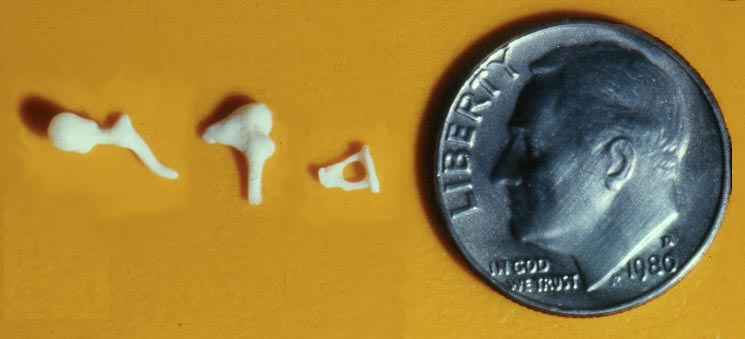

TORP, PORP) may go astray in various ways (see image below of CT scan of a prosthesis).Īs a general rule, ossicular problems are not associated with dizziness, but rather are associated with hearing loss or tinnitus.

When the ossicles are broken, missing, or otherwise not functional, hearing can be reduced by a large amount for "air" conduction, but hearing through the bone is unaffected. The cavity that contains the ossicles (middle ear) is connected to the throat through the Eustachian tube, and to the mastoid sinus. The ossicles of the middle ear serve one primary function: to transfer the vibrations or sound waves from the outer ear to the inner ear for auditory transduction. These muscles can be a source of tinnitus. These muscles work (without much effect) to tighten up the ossicular chain to reduce the impact of loud noise. There are two muscles that attach to the ossicles - the tensor tympani, and the stapedius.

There are 3 ossicles - the malleus, incus and stapes. Image showing middle ear and tensor tympani from Gray's anatomy While useful, be aware that there are multiple errors in this illustration from Loyola Medical School. The stapedius is attached to the stapes (of course - horseshoe object above), while the tensor tympani is attached to the ear drum. Hearing loss is present at birth (congenital) or appears sometime later in life (acquired or delayed onset).Cartoon of the middle ear showing muscles that attach to ossicles (ear bones), and ear drum. Hearing loss gets either better or worse over time (fluctuating) or stays the same over time (stable). Hearing loss worsens over time (progressive) or happens quickly (sudden). Hearing loss is the same in both ears (symmetrical) or is different in each ear (asymmetrical). Hearing loss happened before a person learned to talk (pre-lingual) or after a person learned to talk (post-lingual). Hearing loss is in one ear (unilateral) or both ears (bilateral). The degree of hearing loss can range from mild to profound:Ī person with a mild hearing loss may hear some speech sounds but soft sounds are hard to hear.Ī person with a moderate hearing loss may hear almost no speech when another person is talking at a normal level.Ī person with severe hearing loss will hear no speech when a person is talking at a normal level and only some loud sounds.Ī person with a profound hearing loss will not hear any speech and only very loud sounds. For more information, visit the National Institute of Deafness and Other Communication Disorders. Hearing loss that occurs when sound enters the ear normally, but because of damage to the inner ear or the hearing nerve, sound isn’t organized in a way that the brain can understand. Hearing loss that includes both a conductive and a sensorineural hearing loss. Hearing loss that occurs when there is a problem in the way the inner ear or hearing nerve works. This type of hearing loss can often be treated with medicine or surgery. Hearing loss caused by something that stops sounds from getting through the outer or middle ear. The auditory pathway processes sound information as it travels from the ear to the brain so that our brain pathways are part of our hearing. This nerve sends sound information from the ear to the brain. the semicircular canals that help with balance.the snail shaped organ for hearing known as the cochlea.three small bones called ossicles that send the movement of the eardrum to the inner ear.the eardrum, sometimes called the tympanic membrane, which separates the outer and middle ear.the part we see on the sides of our heads, known as pinna.A hearing loss can happen when any part of the ear or auditory (hearing) system is not working in the usual way.


 0 kommentar(er)
0 kommentar(er)
